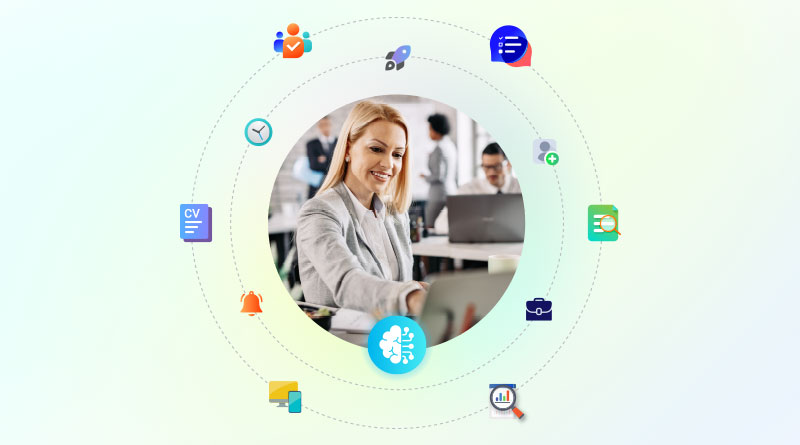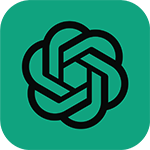Choosing between in-house and remote software development teams can be challenging, with both options having pros and cons. CloudApper AI offers a game-changing alternative that automates software development, providing cost-efficiency, scalability, and flexibility.
Table of Contents
In today’s fast-paced digital landscape, businesses face critical decisions while hiring software developers. Two primary options are building an in-house team or hiring remote developers. Both approaches have their merits and drawbacks, and choosing the right one depends on factors such as project requirements, cost considerations, and scalability needs. In this article, we will explore the pros and cons of in-house and remote development teams and introduce CloudApper’s innovative platform as an alternative that offers cost-efficiency, scalability, and flexibility. Let’s dive in and discover the optimal solution for your software development needs.
In-House Software Development: Pros and Cons
Building an in-house team has advantages and disadvantages when it comes to software development. Let’s explore the pros and cons of this approach:
Pros of In-House Software Development
Building a Cohesive Team: By hiring in-house software developers, you can build a cohesive team that works closely together. This fosters better collaboration, knowledge sharing, and a sense of belonging, which can lead to higher productivity and innovation.
Enhanced Communication and Collaboration: In-house teams benefit from face-to-face interactions, allowing immediate feedback, brainstorming sessions, and effective problem-solving. Communication barriers are minimized, leading to better coordination and alignment between team members.
In-house software development teams can be expensive and restrict the talent pool to a specific geographical area. CloudApper AI provides access to a global talent pool, offering cost savings and a diverse range of skilled developers for your projects.
Increased Control and Direct Oversight: With an in-house team, you have direct control and oversight over the entire development process. You can closely monitor progress, make real-time adjustments, and ensure that your project aligns with your business objectives and quality standards.
Cons of In-House Software Development
Higher Costs: Building and maintaining an in-house development team can be expensive. Costs include recruitment, salaries, benefits, office space, equipment, and ongoing training. These financial commitments may not be feasible for smaller businesses or startups with limited budgets.
Limited Talent Pool: In-house hiring restricts your talent pool to a specific geographical area. Finding the right developers with the required skill set and expertise can be challenging, particularly in regions with global developer shortages. This limitation may hinder your ability to find the best candidates for your projects.
Resource Allocation: In-house development requires allocating resources for software development and managing day-to-day operations. This can divert focus and resources from core business activities, affecting overall productivity and efficiency.
Remote Software Development: Pros and Cons
Remote software development, also known as outsourcing or hiring remote developers from other countries or places, is an alternative approach to building an in-house team. Let’s examine the pros and cons of remote software development:
Pros of Remote Software Development
Access to a Global Talent Pool: Remote software development allows businesses to tap into a vast global talent pool. You can hire skilled developers from around the world, regardless of their geographical location. This widens the talent pool and increases the chances of finding the right expertise for your project.
Cost Savings: Hiring remote developers can be a cost-effective solution. In many cases, remote developers offer more competitive rates than in-house teams, especially considering factors like salaries, benefits, and overhead costs. These cost savings can be significant, particularly for small businesses or startups with limited budgets.
Remote software development introduces communication and collaboration challenges, potentially impacting project success.CloudApper AI streamlines the development process, removing human dependency and ensuring efficient communication and collaboration.
Flexibility and Scalability: Remote software development offers flexibility in scaling your team based on project requirements. You can easily scale up or down by adding or reducing the number of remote developers, allowing you to adapt to changing business needs without the complexities of hiring and firing in-house staff.
Cons of Remote Software Development
Communication and Collaboration Challenges: Working with a remote team introduces communication and collaboration challenges. Different time zones, language barriers, and cultural differences can impact effective communication and hinder collaboration. Clear and consistent communication channels and project management tools are essential to mitigate these challenges.
Quality Control and Trust: When hiring remote developers, there can be concerns regarding the quality of work and trustworthiness. Ensuring that remote developers have the necessary skills, experience, and professionalism is crucial. Implementing robust vetting processes, conducting thorough interviews, and checking references can help mitigate these risks.
Potential Security and Intellectual Property Risks: Sharing sensitive information with remote developers may raise security and intellectual property concerns. Establishing clear agreements non-disclosure agreements (NDAs) and implementing security systems and protocols to protect your data and intellectual property is important.
CloudApper AI: Best Alternative for Hiring Software Developers
While in-house and remote software development has risks and challenges, the digital era calls for innovative solutions that eliminate the hassles associated with traditional hiring processes. Hiring software developers with the right skills is becoming increasingly challenging due to a shortage of talent in the industry. In this context, wasting time on hiring developers who may not possess the required skills is not a viable option. Instead, consider leveraging CloudApper AI for automated software development. Let’s explore why CloudApper AI is the best alternative to hiring software developers:
Removing Human Dependency and Automating Development
CloudApper AI removes the dependency on finding and hiring software developers. CloudApper AI streamlines the entire development process with its automated software development capabilities, saving time and effort. By eliminating the need for human intervention in coding and development tasks, CloudApper AI ensures accuracy, efficiency, and consistency.
Hiring and managing software developers can be time-consuming and resource-intensive for businesses. CloudApper AI automates development tasks, streamlining the process and freeing up time and resources for businesses to focus on core objectives.
Cost-Efficiency and Scalability
CloudApper AI offers cost-efficiency compared to hiring in-house or remote developers. The automated development process reduces overhead costs associated with salaries, benefits, infrastructure, and training. Additionally, CloudApper AI provides scalability, allowing businesses to scale their software development efforts based on project requirements without the challenges of hiring and managing a larger team.
Flexibility and Agile Development Approach
CloudApper AI enables a flexible and agile development approach. It allows businesses to quickly adapt to changing market needs and implement iterative development cycles. With CloudApper AI, you can easily adjust and update your software based on user feedback and evolving business requirements.
Streamlining Software Development Process
CloudApper AI streamlines the software development process by automating repetitive tasks, reducing human errors, and accelerating development timelines. This results in faster time-to-market and improved productivity. With CloudApper AI, you can focus on core business objectives while the platform takes care of the technical complexities.
Leveraging AI for Enhanced Productivity
CloudApper AI leverages artificial intelligence capabilities to enhance productivity throughout the software development lifecycle. It can analyze large data sets, extract valuable insights, and optimize development. By harnessing AI technology, CloudApper AI improves efficiency, enhances decision-making, and helps businesses deliver high-quality software solutions.
Conclusion
Choosing between in-house and remote software development teams is a critical decision that impacts the success of your projects. While in-house teams offer better control and direct oversight, remote developers provide access to a global talent pool and cost-effectiveness. However, CloudApper’s platform offers a game-changing alternative that combines the best of both worlds. By removing human dependency and automating the software development process, CloudApper provides cost-efficiency, scalability, and flexibility. With CloudApper, businesses can streamline their development process, leverage AI technology, and achieve their software development goals efficiently and effectively. Contact us today and embrace the future of software development with CloudApper and unlock unparalleled possibilities for your business.
What is CloudApper AI Platform?
CloudApper AI is an advanced platform that enables organizations to integrate AI into their existing enterprise systems effortlessly, without the need for technical expertise, costly development, or upgrading the underlying infrastructure. By transforming legacy systems into AI-capable solutions, CloudApper allows companies to harness the power of Generative AI quickly and efficiently. This approach has been successfully implemented with leading systems like UKG, Workday, Oracle, Paradox, Amazon AWS Bedrock and can be applied across various industries, helping businesses enhance productivity, automate processes, and gain deeper insights without the usual complexities. With CloudApper AI, you can start experiencing the transformative benefits of AI today. Learn More

Brochure
CloudApper hrPad
Empower Frontline Employees with an AI-Powered Tablet/iPad Solution
Download Brochure
CloudApper AI Solutions



- Works with











- and more.
Similar Posts

How to Hire a Mobile Application Developer For Enterprise?

How Do I Hire a Freelance Web App Developer?



